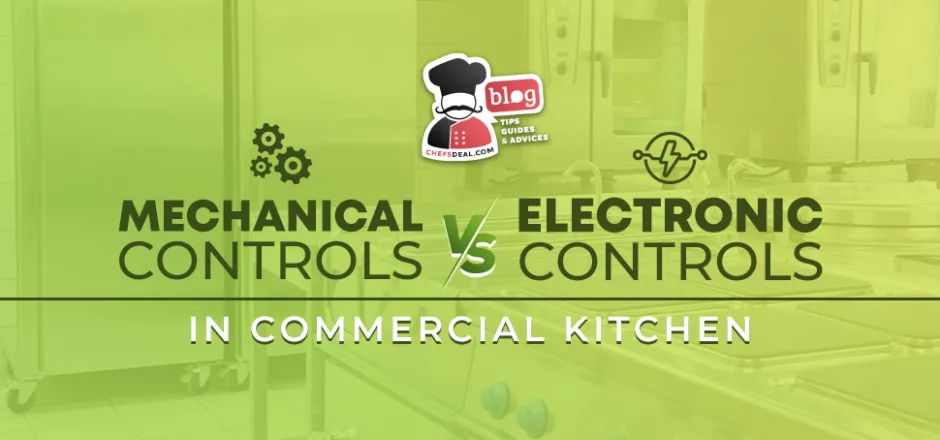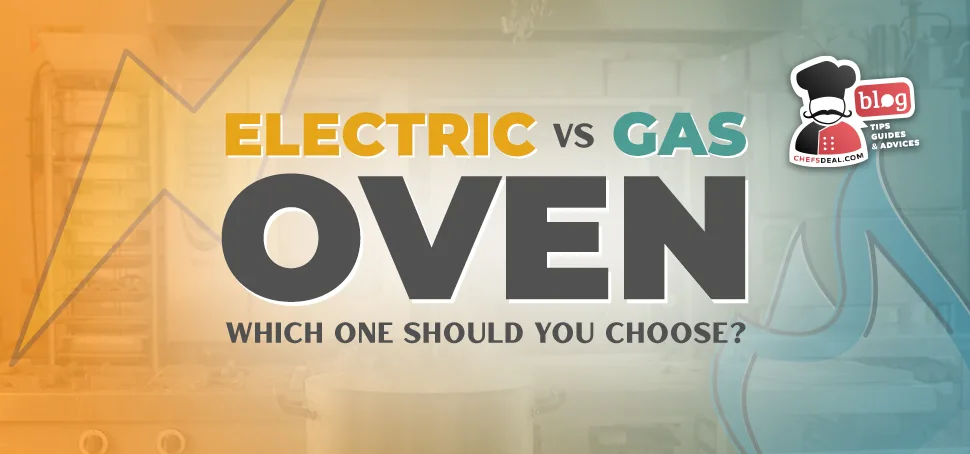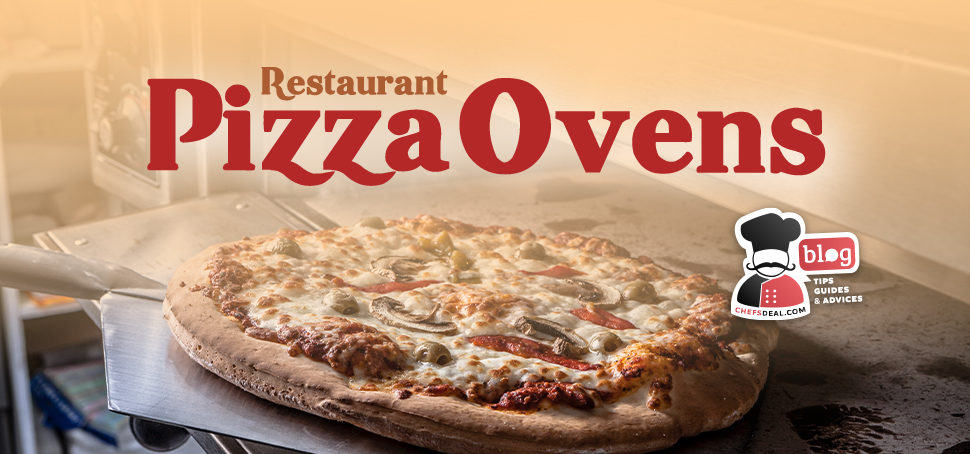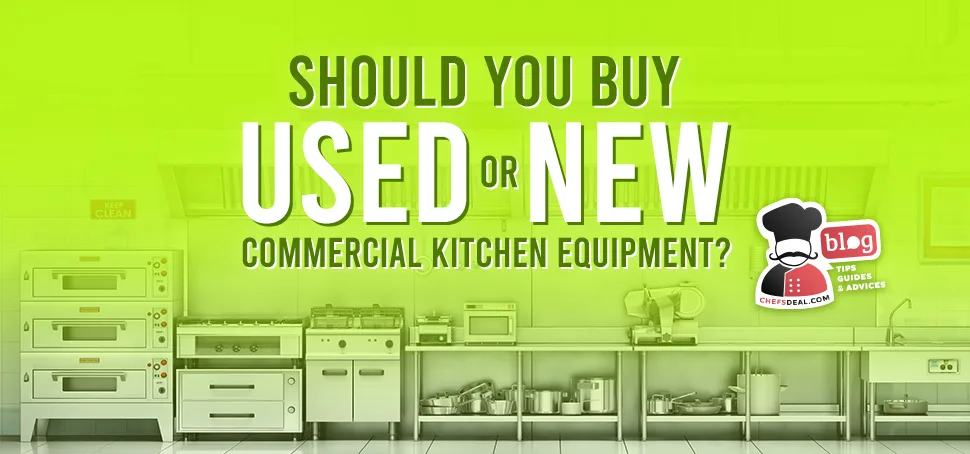Technology has affected every phase of our lives, making many work and jobs easier, more convenient, and more practical. In the foodservice industry, one of technology’s contributions is the change of controls in commercial kitchen equipment, replacing mechanical controls with electronic controls.
Digital controls, auto cycles, and even smart technology are taking the place of dials, timers, and knobs. While some of these features are undoubtedly useful, many consumers still prefer the old-fashioned ease of mechanical control in their appliances. In this article, we will dive into mechanical controls vs. electronic controls in commercial kitchens, explaining the benefits and disadvantages.
What are the Differences Between Them?
The commercial kitchen equipment is designed with maximum capacity to provide efficiency in any progress. So, each item in the kitchen has a functional purpose, whichever style it is.
Mechanical controls in commercial kitchens are operated using physical mechanisms such as knobs and levers, whereas electronic controls use digital interfaces such as touchscreens and buttons. On the other hand, electronic controls provide greater temperature precision, accuracy, and user-friendly details such as alarms and presets. However, they necessitate routine maintenance and are generally more expensive than mechanical controls, which are simpler, more durable, and cheaper. So the choice between the two controls depends on your special preferences and budget.
What are the Mechanical Controls in Commercial Kitchen
Mechanical controls are non-electronic, simple, dependable, and commonly used in commercial kitchens. They are less expensive and more durable than electronic controls because they do not require electricity.
Some of the mechanical controls that commercial kitchen equipment may have:
- Knobs and Levers: These regulate the temperature of commercial kitchen appliances such as ovens, grills, and dishwashers.
- Thermostats: These mechanical devices keep refrigerators and freezers at a constant temperature.
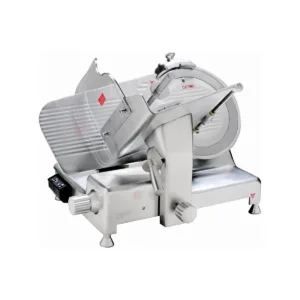
- Timers: Mechanical timers are used to keep track of cooking times for dishes like pasta or vegetables to prevent over or under-cooking.
- Manual Can Openers: These hand-cranked tools are used to open the food cans like tomato sauce or bean cans.
- Manual Meat Slicers: This is another hand-cranked machine that works mechanically and is used to slice meats like ham or turkey.
What are the Electronic Controls in Commercial Kitchen
Electronic controls in commercial equipment are the technological controls that provide practicality in various aspects of kitchen equipment and operations. These may include:
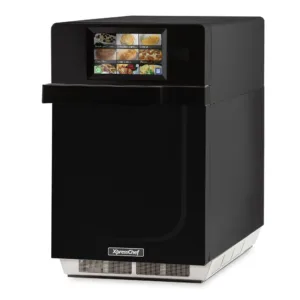
- Digital Temperature Controllers: These are used to keep refrigerators, freezers, and cooking equipment at precise temperatures. They mostly come with presets that adjust the proper temperature for meats, vegetables, or other foods.
- Programmable Ovens: These ovens have electronic controls that allow you to cook different foods at specific temperatures and times. The programs mostly include temperature and time settings for cakes, meats, or baked goods.
- Touchscreen Displays: These displays can control a wide range of kitchen appliances, including ovens, refrigerators, and dishwashers.
- Digital Scales: These scales can measure ingredients precisely, ensuring recipe consistency.
- Automatic Dishwashers: These dishwashers use electronic controls to regulate the temperature of the water, the amount of detergent used, and the length of the wash cycle.
- Inventory Management Software: This software enables you to track food inventory levels and automatically reorder supplies.
- Point-of-sale Systems: These systems help to streamline restaurant operations by managing orders, payments, and menu items.
Advantages and Disadvantages
Both electronic and mechanical controls have pros and cons, so which one to use depends on the kitchen’s needs.
Mechanical controls, such as knobs and levers, are straightforward and dependable. They are less expensive than electronic controls and do not require a power supply. Mechanical controls are also simple to use and understand, which is advantageous for kitchen staff who are not technologically savvy. Furthermore, mechanical controls are more durable than electronic controls and can withstand harsh environments like high heat and moisture.
Mechanical controls, on the other hand, have limitations. They are not as precise as electronic controls and can be more difficult to adjust quickly. They are also susceptible to wear and tear, necessitating more frequent maintenance and repairs.
Electronic controls provide more precise control over kitchen appliances such as ovens, fryers, and refrigerators. They can be programmed to maintain consistent temperatures and cooking times, improving food quality and consistency. Electronic controls can be linked to other systems, such as inventory management and ordering software, to streamline kitchen operations.
But, electronic controls are typically more expensive than mechanical controls and may necessitate specialized training for kitchen staff to operate effectively. They also require a power source, which can be difficult in kitchens with limited electrical outlets.
Mechanical Controls vs. Electronic Controls: 5 Factors to Choose
These five factors are the main considerations when deciding whether to use electronic or mechanical controls in a commercial kitchen:
1. Functionality: The functionality of the equipment you are controlling is the first issue to consider. Some kitchen appliances and systems work better with electronic controls, while others may work better with mechanical controls. Electronic controls, for example, are better suited for precise temperature control of ovens or refrigerators, whereas mechanical controls are better suited for simple on/off switches for ventilation systems in heavy-trafficked kitchens.
2. Reliability: Electronic controls are more likely to fail and require more maintenance than mechanical controls. On the other hand, mechanical controls are more durable and reliable over time.
3. Cost: While electronic controls are more expensive up front, they may save money in the long run due to increased energy efficiency and performance. Mechanical controls may be less costly initially, but they may need to be replaced or repaired more frequently.
4. User-Friendliness: With features like touchscreens and programmable settings, electronic controls can be more user-friendly. Mechanical controls are easier to use but may require more manual adjustments and monitoring.
5. Safety: In some cases, electronic controls may be safer, especially if they include automatic shut-off or safety features. Mechanical controls may be more vulnerable to user error and damage.
To Sum Up
In conclusion, mechanical controls are simple, dependable, long-lasting, and cost-effective, whereas electronic controls provide practicality and speed with more precise regulation and can be integrated with other systems. Both electronic controls and mechanical controls in commercial kitchens work better for different appliances, so deciding which one to use is up to your preferences, budget, and specific needs.
You may also wish to see our blog about “Choosing the Right Commercial Kitchen Equipment” to clarify which equipment you need, and according to your preferences, you can decide which control type fits your kitchen.

